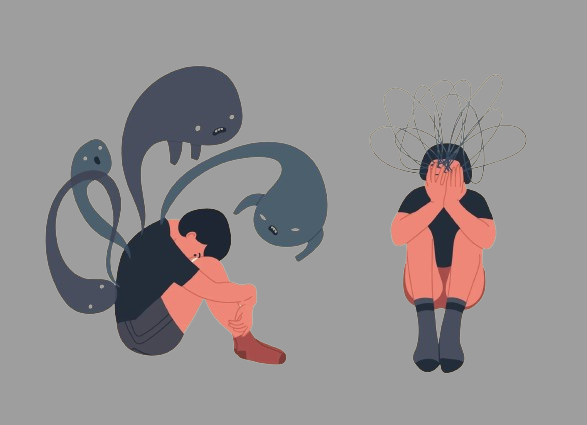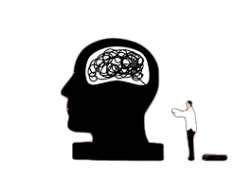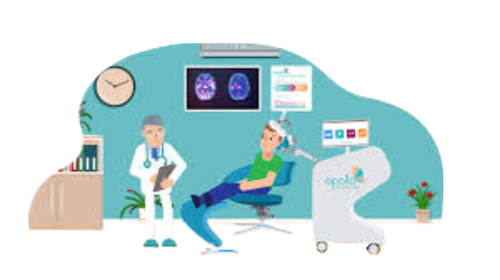Introduction
Workplace anxiety disorder is an increasingly recognized mental health concern in modern professional environments. As work demands intensify and the boundaries between professional and personal life blur, more individuals experience persistent stress, fear, or worry related to their jobs. Unlike temporary nervousness before a big presentation, workplace anxiety is chronic, often accompanied by physical tension, intrusive thoughts, and emotional exhaustion.

According to the American Psychological Association, work consistently ranks among the leading sources of stress for adults in the United States. Yet, because high performance and composure are often expected at all times, many employees conceal their struggles. This silent distress can erode productivity, diminish well-being, and eventually lead to burnout or clinical anxiety disorders.
What Is Workplace Anxiety?
Workplace anxiety refers to persistent feelings of fear, worry, or tension directly related to one’s job or work environment. It may involve dread before going to work, constant self-doubt about performance, or overwhelming concern about deadlines and interactions.
Clinically, workplace anxiety shares many features with generalized anxiety disorder (GAD). However, it is context-specific — triggered primarily by job-related factors rather than general life stressors.
Key Features
- Emotional: Persistent worry, irritability, restlessness, or dread about work.
- Cognitive: Difficulty concentrating, racing thoughts, perfectionism, or self-criticism.
- Physical: Rapid heartbeat, muscle tension, headaches, fatigue, or insomnia.
- Behavioral: Avoidance of meetings, procrastination, or overworking to mask anxiety.
Normal Stress vs. Anxiety Disorder
Feeling occasional stress at work is normal and even motivating. However, workplace anxiety becomes a disorder when symptoms are:
- Persistent (lasting for weeks or months)
- Excessive (out of proportion to actual work challenges)
- Impairing (interfering with performance, health, or personal life)
When left untreated, chronic workplace anxiety can spiral into burnout, depression, or other anxiety-related conditions.
Why Is My Job Causing Severe Anxiety?
Jobs can trigger anxiety for many interconnected reasons — organizational, interpersonal, and personal. Understanding these root causes helps identify both individual and systemic solutions.
1. High Workload and Unrealistic Expectations
Constant deadlines, long hours, and performance pressure can push employees into a state of sustained hyperarousal. Over time, this leads to emotional exhaustion and cognitive fatigue. When the workload consistently exceeds capacity, the body’s stress response remains activated, creating physiological wear known as allostatic load.
2. Lack of Control or Autonomy
Employees who feel powerless in decision-making or micromanaged often develop learned helplessness — a psychological state where control feels impossible. This perceived loss of agency is strongly linked to anxiety and demotivation.
3. Toxic or Unsupportive Work Environments
Bullying, discrimination, favoritism, and lack of recognition contribute to emotional distress. Negative social interactions at work can trigger a chronic fight-or-flight response, leading to persistent fear and insecurity.
4. Job Insecurity and Economic Pressure
Fear of layoffs, unstable contracts, or financial uncertainty can cause anticipatory anxiety. Workers in competitive or unstable industries are particularly at risk.
5. Perfectionism and Imposter Syndrome
High achievers often experience internalized pressure to maintain flawless performance. Imposter syndrome — the fear of being exposed as “incompetent” despite success — intensifies this anxiety, creating a cycle of overwork and self-doubt.
6. Poor Work-Life Balance
The expectation of constant availability, especially in remote or hybrid jobs, blurs personal boundaries. Without sufficient downtime, the nervous system cannot recover from daily stress, perpetuating anxiety and fatigue.
What Are the Common Signs and Symptoms of Workplace Anxiety Disorder?
Workplace anxiety manifests differently across individuals, but several patterns are consistently observed.
Emotional Symptoms
- Persistent worry about performance or job stability.
- Feelings of dread before work or during work hours.
- Irritability, frustration, or emotional detachment.
- Reduced motivation and sense of accomplishment.
Cognitive Symptoms
- Overthinking small mistakes or fearing criticism.
- Difficulty focusing or retaining information.
- Catastrophic thinking — expecting the worst outcome.
- Constant self-criticism or perfectionism.
Physical Symptoms
- Muscle tension, headaches, or neck and back pain.
- Sleep disturbances, including insomnia or vivid dreams about work.
- Digestive issues or loss of appetite.
- Fatigue or low energy despite rest.
Behavioral Symptoms
- Procrastination or avoidance of challenging tasks.
- Overcompensating by overworking.
- Social withdrawal or irritability toward colleagues.
- Increased reliance on caffeine, alcohol, or other coping mechanisms.
When these symptoms persist and interfere with functioning, they may indicate an anxiety disorder rather than temporary stress.
The Psychological Impact of Workplace Anxiety
The consequences of workplace anxiety extend far beyond momentary distress. Chronic anxiety affects the brain, body, and behavior — reducing both individual well-being and organizational productivity.
1. Cognitive Impairment
Prolonged anxiety disrupts prefrontal cortex functioning, impairing decision-making, memory, and problem-solving. Employees often struggle to concentrate or complete tasks efficiently, leading to self-blame and worsening anxiety.
2. Burnout
Anxiety-driven overworking eventually leads to burnout — a state of emotional, physical, and cognitive exhaustion. Symptoms include cynicism, detachment, and a sharp decline in work satisfaction.
3. Physiological Strain
Continuous activation of the body’s stress response elevates cortisol and adrenaline levels. Over time, this increases the risk of hypertension, cardiovascular disease, and immune dysfunction.
4. Emotional Dysregulation
Individuals with workplace anxiety may find it difficult to manage emotions, leading to mood swings, irritability, or withdrawal. Over time, this emotional strain can contribute to depression or panic attacks.
5. Impact on Interpersonal Relationships
Anxiety can cause communication breakdowns, conflict avoidance, or excessive reassurance-seeking from colleagues. Team dynamics suffer when anxiety is unaddressed.
How Do You Deal with Anxiety at Work?
Managing workplace anxiety requires a multi-dimensional approach that addresses thoughts, emotions, behaviors, and environmental factors.
1. Cognitive-Behavioral Strategies
Cognitive-behavioral therapy (CBT) is one of the most effective approaches for anxiety management. Core techniques include:
- Cognitive restructuring: Identifying and reframing irrational fears about performance or judgment.
- Exposure: Gradually facing anxiety-provoking tasks to build confidence.
- Self-monitoring: Recognizing early signs of anxiety to intervene proactively.
2. Mindfulness and Relaxation Techniques
Mindfulness meditation, breathing exercises, and progressive muscle relaxation help regulate the body’s stress response. Practicing present-moment awareness reduces rumination and enhances emotional stability.
3. Healthy Work Habits
- Time management: Prioritize tasks and avoid overcommitment.
- Break scheduling: Short, regular breaks enhance focus and reduce fatigue.
- Workspace organization: A calm environment supports concentration and emotional clarity.
4. Boundary Setting
Establishing clear boundaries between work and personal life prevents emotional depletion. Avoid checking emails outside working hours and communicate workload concerns openly.
5. Social Support
Seeking help from colleagues, supervisors, or HR can reduce feelings of isolation. Supportive work relationships foster resilience and improve overall morale.
6. Professional Help
If anxiety persists, consulting a therapist or psychologist is essential. Therapeutic interventions, medication, or integrated treatment plans can provide lasting relief and coping strategies.
Preventing Workplace Anxiety and Building Resilience
1. Promoting a Healthy Work Culture
Organizations play a crucial role in mental health. Implementing open communication, realistic expectations, and employee recognition can prevent anxiety triggers.
2. Building Individual Resilience
Resilience is the ability to adapt positively to stress. It can be strengthened through:
- Emotional regulation training.
- Regular physical activity.
- Adequate rest and nutrition.
- Developing a growth mindset that frames challenges as learning opportunities.
3. Encouraging Psychological Safety
A psychologically safe environment allows employees to express concerns without fear of judgment. This fosters trust, collaboration, and mental well-being.
4. Preventive Self-Care
Daily practices such as journaling, deep breathing, and gratitude exercises enhance emotional balance. Over time, consistent self-care reduces vulnerability to anxiety.
When to Seek Professional Help
It is important to seek professional assistance when:
- Anxiety interferes with concentration, relationships, or job performance.
- You experience frequent panic attacks or overwhelming dread.
- Physical symptoms (e.g., insomnia, heart palpitations) persist.
- You use alcohol, food, or other substances to manage stress.
Psychologists, psychiatrists, and licensed counselors can diagnose and treat anxiety through therapy, medication, or a combination of both. Early intervention improves recovery outcomes and prevents long-term complications.
Conclusion
Workplace anxiety disorder is a serious but manageable condition that affects millions of professionals worldwide. While occasional stress is inevitable, chronic anxiety can erode mental health, physical well-being, and job satisfaction. Understanding its causes, recognizing symptoms, and adopting effective coping strategies are vital steps toward recovery.
Creating psychologically healthy workplaces requires a shared commitment from both individuals and organizations. With awareness, professional support, and proactive stress management, it is possible to overcome workplace anxiety and foster resilience, productivity, and emotional balance.



